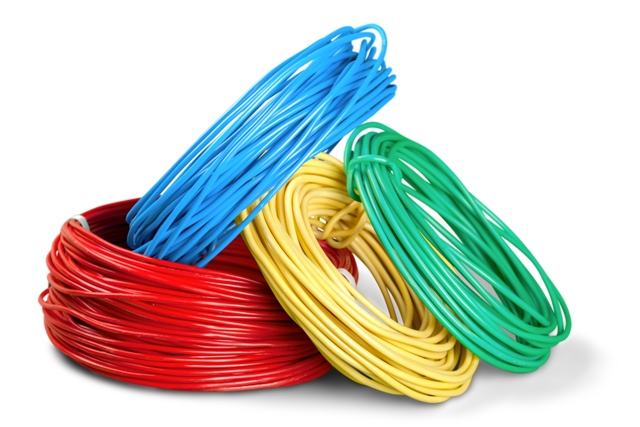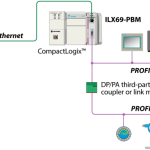Electric cables are designed and manufactured for specific applications, from small ones used in electronic circuits to strong ones with armored core. Each of them have to be handled carefully. The health of electric cables is measured by insulation resistance, which must be checked regularly.
Cables are constructed of several basic parts, but the construction finally depends on the application and the properties desired. For example, the thickness of cable insulation depends, among other factors, the system voltage rating. The current rating of the cable is the current that it can carry continuously without the conductor exceeding 80 degrees C when the ambient temperature is 45 degrees C. The voltage drop in the cables must not drop below 6 % but in practice should be about 2 %. Multi-core cables have the cores differently colored for identifying them.
As per the application and the need, electric cables must have the following properties:
1. Size: The area of the conductor decides the current it can carry. The more the area of the conductor the less are the transmission losses.
2. Strength: The strength depends on the application.
3. Cold temperature resistance: In climates where it is very cold, conventional insulation materials may fail.
4. Fire resistance: They must be fire retardant.
5. Weight: There is always a conflict between mechanical strength and weight. Weight depends upon the application as well. However the reduction in weight may reduce the mechanical strength.
6. Radiation resistance: The thickness of the insulation is dependent on the working voltage and the mechanical strength required.
7. Moisture resistance: Useful for high moisture applications like marine and coastal areas.
8. Chemical resistance: In chemical process plants.
9. Oil resistance: In oil process fields.
10. Electrical properties: Conductivity and the losses, etc. Thus depending on the application, the metal may be copper, aluminum, silver metal, copperweld, aluminoweld, tinsel, etc.
11. Mechanical strength and resistance to mechanical abrasion: It determines the construction of the protective sheathing.
Materials Used
Conductors are made of metals like copper, aluminum, or composites, again depending on the application. The conductor can be a single strand like a thin rod, stranding, bunch stranding, concentric strand, rope lay, etc.
The insulation material used are rubbers like neoprene and hypalon, PVC, Nylon, Styrene Butadiene, Ethylene-Propylene, Crosslink Polyethylene, Chlorinated Polyethylene, Silicone Rubbers, Polychloroprene, etc.
Maintenance of cables
In electric cables there is generally preventive maintenance, and we have to protect them from mechanical damage and ensure their correct handling. Wires, when stripped at the ends to connect to plugs or to cable connectors, must be cut properly. Using a dedicated wire stripper instead of hacksaw blades and pliers protects the cables from damage. Burning the end of the wire to remove the insulation is another bad practice. Not only does it damage the cable and alter the material properties, but the vapors and smoke that come out are highly toxic.
High voltage cables must be checked for insulation resistance, especially if they are the power cables of machines that work in aggressive environments like handlers, tunnel borers, etc. The cables in these applications may develop low insulation resistance, which can be due to mechanical damage or because of working in humid atmospheres. Therefore the cables must be periodically inspected and tested, especially when checking the connected appliances and machines.
Also remember that every wire insulation has a critical resistance, above which the heat transfer properties may differ. Therefore the cables must never be painted as it can lead to overheating and fire.
In high voltage cables the earthing of the cable armoring should be done to protect the personnel from harm.
Drying out of cables
In case the electric cable is showing a low insulation resistance because it has become wet or absorbed moisture, we can dry out the cable. The electric cables can be dried by injecting a heating current from a current injection set or a welding transformer.
In this procedure the only care is to not overheat the cables that could aggravate the damage. Prior to the drying work the cable should be disconnected from both the ends from the machine and removed to a safe place. The one end of the cable has to be shorted and from the other end the current must be injected. In case of multi core cable you have to short them in such a way to form a continuous conductor with two free ends for injecting current.
Care has to be taken that the injected current for heating must never exceed the rated current for the cable. The cable temperature must be measured with an infrared ray remote thermometer. After the temperature resistance becomes steady and comes between 20 megaohm to earth and 100 megaohm between cores then the procedure can be stopped.




Comments are closed